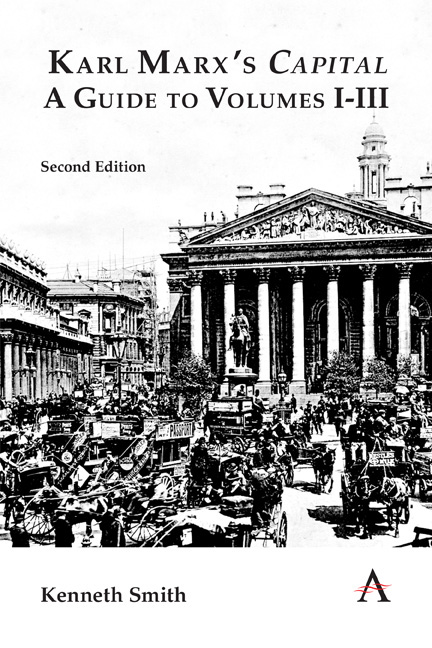Book contents
- Frontmatter
- Dedication
- Contents
- Preface to the Second Edition
- Introduction
- Part I The Development of the Capitalist Mode of Production
- Part II The Capitalist Mode of Production
- Part III The Underdevelopment of the Capitalist Mode of Production
- Part IV The Value Theory of Labour
- Conclusion to Part IV
- Conclusion
- Appendix: On Social Classes
- Notes
- Bibliography
- Index
11 - Credit and the Dissolution of the CMP in Capital, Vol. III, Ch. 27
Published online by Cambridge University Press: 17 April 2021
- Frontmatter
- Dedication
- Contents
- Preface to the Second Edition
- Introduction
- Part I The Development of the Capitalist Mode of Production
- Part II The Capitalist Mode of Production
- Part III The Underdevelopment of the Capitalist Mode of Production
- Part IV The Value Theory of Labour
- Conclusion to Part IV
- Conclusion
- Appendix: On Social Classes
- Notes
- Bibliography
- Index
Summary
Marx's short chapter ‘The Role of Credit in Capitalist Production’ (1977, 435–41 [1981, 566–73]) is probably one of the most neglected but also one of the most important things he ever wrote. In it, he not only gives us his views on the role of the credit system in the development and underdevelopment of the capitalist mode of production itself (something which has become even more important since the recent collapse of the credit system); he also outlines his views on the subject of ‘joint-stock companies’ and the development of shareholding, monopoly capitalism, state interference in the economy and gives us what is probably the best example in Capital of his use of the dialectical method.
Having briefly looked at Marx's discussion of the circulation of merchant's capital in the previous chapter, we are now going on to consider the related issue of what he has to say about the development of the credit system and in particular the claim that the development of the credit system is one of the main factors helping to bring about the destruction of the CMP from within. However, as we will see, this superficially attractive claim is in fact incorrect since, as Marx explains, nothing can bring about its own destruction as part of the normal operation of the system without at the same time destroying itself. By itself therefore, the normal operation of the credit system alone cannot possibly bring about the end of the CMP.
Marx outlines his general views on this matter in Vol. III, Parts 4 and 5 (1977, 267–613 [1981, 379–748]) and discusses the effects of the credit system on the development of the CMP itself in the first two pages of Vol. III, Chapter 27 (1977, 435–6 [1981, 566–7]), in particular. According to Marx, credit has the effect of reducing the costs of circulation. It does this by doing away with the need for money altogether; by the more rapid circulation of such money that is already in existence; and by enabling paper money to replace precious metals as the usual material substance of money, and thereby doing away, at least in part, with the need to mine precious metals.
- Type
- Chapter
- Information
- Karl Marx's 'Capital': A Guide to Volumes I-III , pp. 91 - 96Publisher: Anthem PressPrint publication year: 2021



